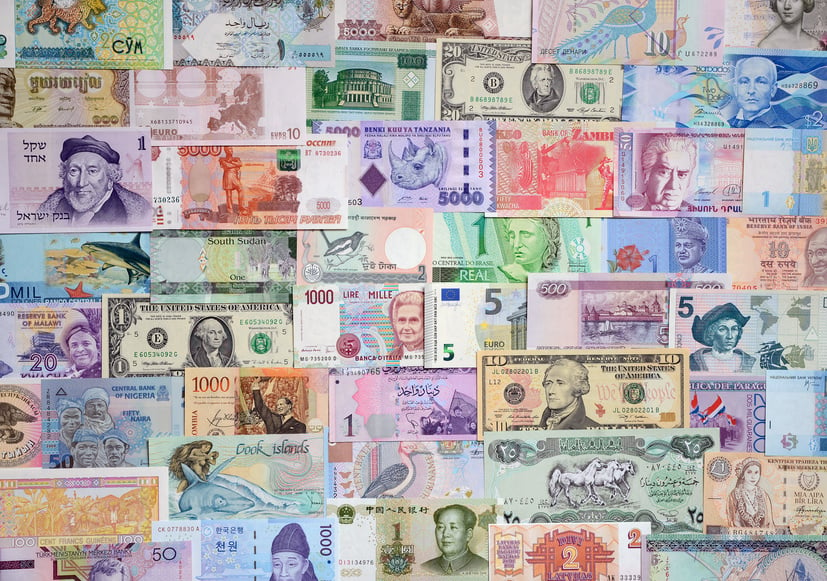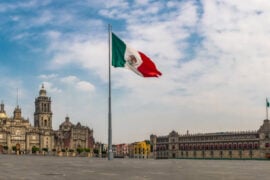It is difficult to overlook the sweeping proliferation of anti-corruption laws and cross-border enforcement efforts among governments worldwide. This trend continues to manifest itself not only among governments, but also intergovernmental bodies which share a parallel interest in taking action against corrupt conduct. International organisations such as the World Bank and its sister multilateral development banks (MDBs) continue to be at the forefront of investigating and preventing corruption and fraud in the projects they finance.
Established in 1944 as an international financial institution to facilitate reconstruction and development post-World War II, the World Bank has undergone significant changes over the years as it has sought to ameliorate the effects of poverty in low income countries. As part of its mission, the World Bank exercises its fiduciary duties to ensure that the more than US$ 64 bn in loans, grants, investments and guarantees are adequately safeguarded from corruption, fraud and collusion through its sanctions regime. The World Bank effectuates its sanctions regime by invoking audit rights reflected in its contracts, which then generally lead to investigations. These investigations are often far-reaching, protracted exercises that subject companies to burdensome demands for documentation, data and witness interviews, and often result in referrals to national authorities, and debarment actions against companies and individuals.
The World Bank’s anti-corruption arm, the lntegrity Vice Presidency (IND), has been a prominent figure in international anti-corruption efforts for 20 years. During that time, the INT has not only grown in size and strength, but also honed its ability to identify and develop cases of improper conduct. The INT’s substantiation rates have increased steadily over the past 11 years, from 9 percent in 2006 to 65 percent in 2017. Between 2007 and 2015, the World Bank had debarred more than 700 companies and individuals, according to its most recent Suspension and Debarment Report (2016).While the number of cases opened each year continues to fluctuate, the INT increased the number of debarments by 34 percent from 2015 to 2016, and is on pace for another increase in 2017.
Despite the rise in prominence of the World Bank’s anti-corruption efforts, companies continue to be surprised when they find themselves thrust into its well developed, well resourced and process-heavy investigation and sanctions regime. The bank’s sanctions regime is predicated on its contractual rights – that is, the right to investigate and enforce its anti-corruption and anti-fraud principles in any project it directly or indirectly finances. Because most of the World Bank’s financing is indirect (i.e., it loans funds to a government which then has primary responsibility for managing the project), many companies fail to detect the World Bank-funded aspect of the contract and the attendant contractual obligations that follow. Therefore, it is imperative for companies operating in emerging and higher- risk markets – particularly those in the engineering, energy and telecommunications sectors – to carefully scrutinise government contracts to discern the extent to which there may be financing from the World Bank or other MDBs.
The World Bank sanctions regime and its consequences are expansive
The World Bank’s sanctions regime contemplates multiple forms of misconduct, including:(i) corruption – offering or giving bribes to influence public officials; (ii) fraud – misrepresentations that mislead, or attempt to mislead, a party in order to obtain a benefit; (iii) collusion – arrangements that make a procurement process less competitive, including horizontal and vertical collusion; (iv) coercion – threats and similar improper actions designed to influence a procurement or contract; and (v) obstruction -destroying or falsifying evidence, impeding an investigation or hindering the World Bank’s contractual audit rights.
The World Bank’s sanctions regime extends to the contracting companies, and those acting on behalf of the company, including employees, agents, subcontractors and subconsultants. Companies are therefore held responsible for all manner of conduct occurring on the World Bank-financed contract, ranging from instances of false curriculum vitae submitted by subcontractors and false certifications of completion to bribery. The World Bank’s ability to pursue a broad panoply of misconduct is aided by its low standard of proof – a preponderance of evidence – and the lack of constraints that apply to conventional governmental investigations, such as procedural rules and tribunals which limit the discretion and power of the investigator. Under its regime, the World Bank is afforded a vast degree of investigative authority, all under the guise of a financial audit.
Sanctions determinations are made through a two-tier system, with the INT presenting evidence to the Sanctions and Debarment Officer (SDO) for determination at the first instance. The parties may then appeal the determination to the Sanctions Board, a quasi-judicial administrative tribunal that evaluates the case de novo and grants the parties an opportunity to file written submissions and request a hearing. As with other major enforcement authorities, parties may at any time enter into a settlement agreement.
Notably, the effects of World Bank sanctions are no longer confined to World Bank-financed projects. Sanctions greater than one year in duration are subject to cross-debarment among the largest MDBs (African Development Bank, Asian Development Bank, lnter-American Development Bank, European Bank for Reconstruction and Development and World Bank Group), pursuant to a Cross-Debarment Agreement executed in 2010. Further, the World Bank generally publishes sanctions against companies and individuals on its website, thereby creating negative collateral consequences for companies bidding on other public or private contracts, establishing joint ventures or preparing for an acquisition.
Not only can the World Bank carry out its own investigation and enforcement process, but it regularly shares information with national enforcement authorities. Whether the information is obtained through its own investigation or through voluntary disclosure from parties under review, the World Bank develops and shares final investigation reports that summarise the results of its investigation. In certain circumstances, the World Bank will also provide to national authorities the evidence it has uncovered . As a result, improper conduct known to the World Bank can – and often does – result in parallel or follow-on prosecutions by enforcement authorities in multiple countries. In recent years, the World Bank has collaborated with investigations in the United States, Sweden, Australia, France, lndia, Germany and Canada, among others. Examples of investigations conducted in parallel between the US Justice Department and the World Bank include Siemens, Alstom, Louis Berger and, more recently, CDM Smith.
Because of the World Bank’s openness with its findings, national authorities are able to obtain information and evidence that in many instances they would not otherwise be able to procure, including witness statements, email communications and banking information. Most notably, evidence may be procured by the World Bank from companies and individuals without consideration of rights against self-incrimination or the right to counsel. Furthermore, the World Bank’s sovereign immunity could protect it from being compelled to share such evidence with companies and individuals in follow on proceedings, as was the case in The World Bank Group v. Wallace (2016), a Canadian prosecution of former agents and employees of SNC-Lavalin Group lnc.
Recent trends and the World Bank’s enforcement efforts worldwide
Recently, the World Bank’s enforcement efforts have been most active in Europe and Central Asia, followed by Africa. The sectors generating the most cases are generally those which may require large scale investment. The World Bank has focused on the energy/extractives, transportation, water, power and health sectors, as they continue to create the highest risk of improper conduct on World Bank financed projects. Education, agriculture and social development sectors also generate considerable scrutiny given the higher-risk markets where World Bank funds are disbursed and the attendant corruption risks that follow.
Fraud remains the most common form of improper conduct sanctioned by the World Bank, chiefly as it presents a more readily-provable offence than bribery. Between 2007 and 2015, 83 percent of sanctioned parties were charged, at least in part, with fraud. Fraud cases are most often based on forged third-party documents (e.g., forged guarantees or certifications) and other fraudulent documentation (e.g., forged invoices or evidence of completion).Corruption and collusion are the next most common forms of sanctionable conduct.
Practical guidance for companies operating under world Bank-financed contracts
Be aware of which entities are financing the project. Governments in high-risk regions often rely on international assistance to support mid and large-scale projects. Companies should look not only for World Bank financing, but also financing from other MDBs, all of which have become increasingly engaged in sanctions enforcement. lt should also be noted that other multilateral institutions, such as the United Nations, the Global Fund and Japanese International Cooperation Agency, have sanctions regimes that are materially similar to the World Bank’s sanctions regime.
For companies pursuing contracts financed by the World Bank or other MOBs, it is imperative that they implement a compliance programme designed to mitigate the risk of not only corruption and fraud, but also collusion. The World Bank’s lntegrity Compliance Office has published guidance reflecting its standards for an effective compliance programme, which are utilised when reviewing a company under scrutiny. Key areas of risk mitigation in the MOB context are third-party management and representations made in tender documentation.
Companies should regularly conduct comprehensive risk assessments to adequately profile their risk at a global level with respect to sanctionable conduct and address it in their compliance programmes.
Companies should develop meaningful plans to remediate any gaps uncovered in the assessment of their compliance programmes and follow through with effective implementation of such plans.
Companies should communicate their compliance standards and expectations to all those acting on their behalf, particularly when undertaking a project that is financed by the World Bank or other MOBs. This includes agents, consultants, subcontractors and suppliers, all of whom can trigger potential debarment consequences for a company.
If effectively implemented, these measures should serve to prevent or mitigate any potentially sanctionable conduct that may emerge from work pursued in higher-risk markets.
This article was first published in Risk & Compliance Magazine Jan-Mar 2018 issue.



